Related Research Articles

The Slingsby T.37 Skylark 1 was a small low-cost sailplane built during 1952-3 at Kirbymoorside, Yorkshire by Slingsby Sailplanes.

The Slingsby Type 34 Sky is a high performance single seat competition sailplane built in the United Kingdom. It was successful in major events, particularly in the World Gliding Championships of 1952.
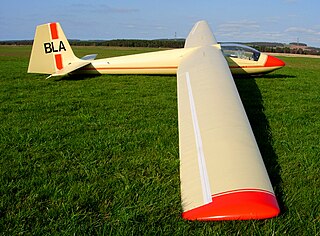
The Slingsby T.50 Skylark 4 was a British single seat competition glider built by Slingsby Sailplanes in the early 1960s. It sold in numbers and had success at national, though not world level competition.
The Akaflieg Darmstadt D-34 sailplanes were a series of experimental single seat sailplanes, designed at the University of Darmstadt in the 1950s and early 1960s to explore the structural and aerodynamic advantages of the then emerging plastics and composite materials.

The Antonov A-9 was a single-seat sailplane designed and built in the USSR in the 1940s, a development of the record setting Red Front 7.

The Cijan-Obad Orao is a competition single seat sailplane designed in Yugoslavia just after World War II, one of the most advanced of its type at the time. It flew in three World Gliding Championships, having greatest success at its first in 1950 when it reached third place.
The Kirigamine Mita is a training glider, seating two in tandem, designed in Japan in the early 1960s. A modified version, first flown in 1966, was produced in modest numbers.
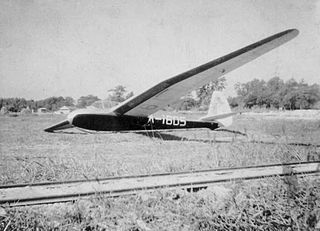
The Maeda 703 was one of the first indigenous Japanese gliders, a high performance single seat aircraft which first flew in 1940. Three were built, two with gull wing wings; one of these set a national endurance record in 1941.

The CVV 8 Bonaventura was a two-seat competition glider designed and built in Italy during the 1950s. Fifteen were produced.

The DFS Rhönsperber, otherwise known as the Schweyer Rhönsperber or Jacobs Rhönsperber was a single seat competition glider designed in Germany by Hans Jacobs and first flown in 1935. For several years it was regarded as the best German sailplane and about one hundred were built.
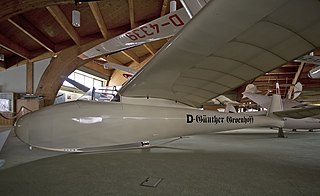
The Schleicher Rhönadler, DFS Rhönadler or Jacobs Rhönadler is a high performance, single seat competition sailplane built in Germany in the 1930s. More than 65 were built.
The Scheibe SF-30 Club-Spatz is a 15 m class single seat sailplane built in Germany in the 1970s and intended for club use.
The IIL IS-4 was a single seat, high performance sailplane designed by Iosif Șilimon and built in Romania in the late 1950s.
The IIL IS-7 was a two-seat, sailplane designed by Iosif Șilimon and built in Romania in the late 1950s. Only one prototype was built.
The IIL IS-8 was a two-seat sailplane designed by Iosif Șilimon and built in Romania in 1960. They served with Romanian gliding clubs.
The IIL IS-10 was a high-performance, single-seat glider, designed and built in Romania in the early 1960s. It was the first Romanian aircraft to use laminar flow airfoils.
The IIL IS-11 was an aerobatic, single seat glider, designed and built in Romania in 1959. It was built in small numbers.
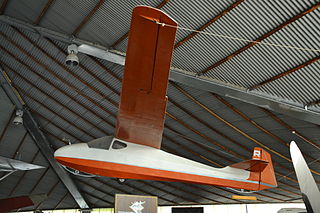
The Schneider ES-57 Kingfisher is a low-cost, short-span Australian glider capable of respectable cross country soaring flights. It was produced in small numbers in the late 1950s.
The Schneider ES-56 Nymph was a short span, Australian glider with a laminar flow wing, built in the 1950s. Only four were built.
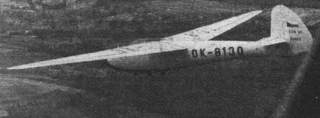
The Zlín Šohaj series of club gliders began as a post World War II development of the DFS Olympia Meise. A large number were built in the 1940s and '50s.
References
- 1 2 3 4 Taylor, John W R (1964). Jane's All the World's Aircraft 1964-65. London: Sampson Low, Marston & Co. Ltd. pp. 47, 358.
- 1 2 3 4 Shenstone, B.S.; Wilkinson, K.G. (1963). The World's Sailplanes. Vol. II. Organisation Scientifique et Technique Internationale du Vol à Voile (OSTIV) and Schweizer Aero-Revue. pp. 84–5.
- ↑ "Murville SM.31" . Retrieved 14 March 2014.
- ↑ Ogden, Bob (2009). Aviation Museums and Collections of Mainland Europe. Air Britain (Historians) Ltd. pp. 126, 147. ISBN 978 0 85130 418 2.